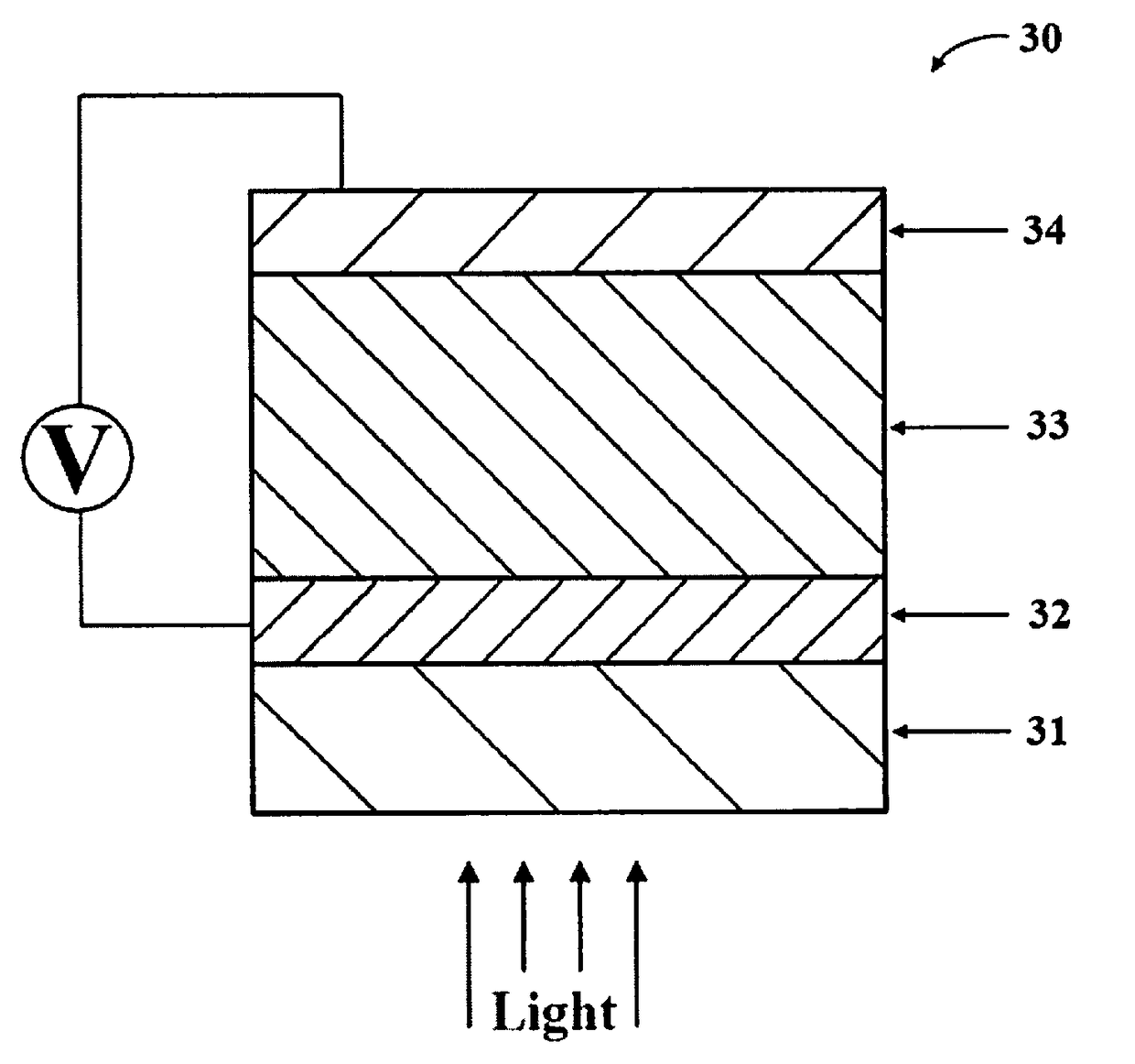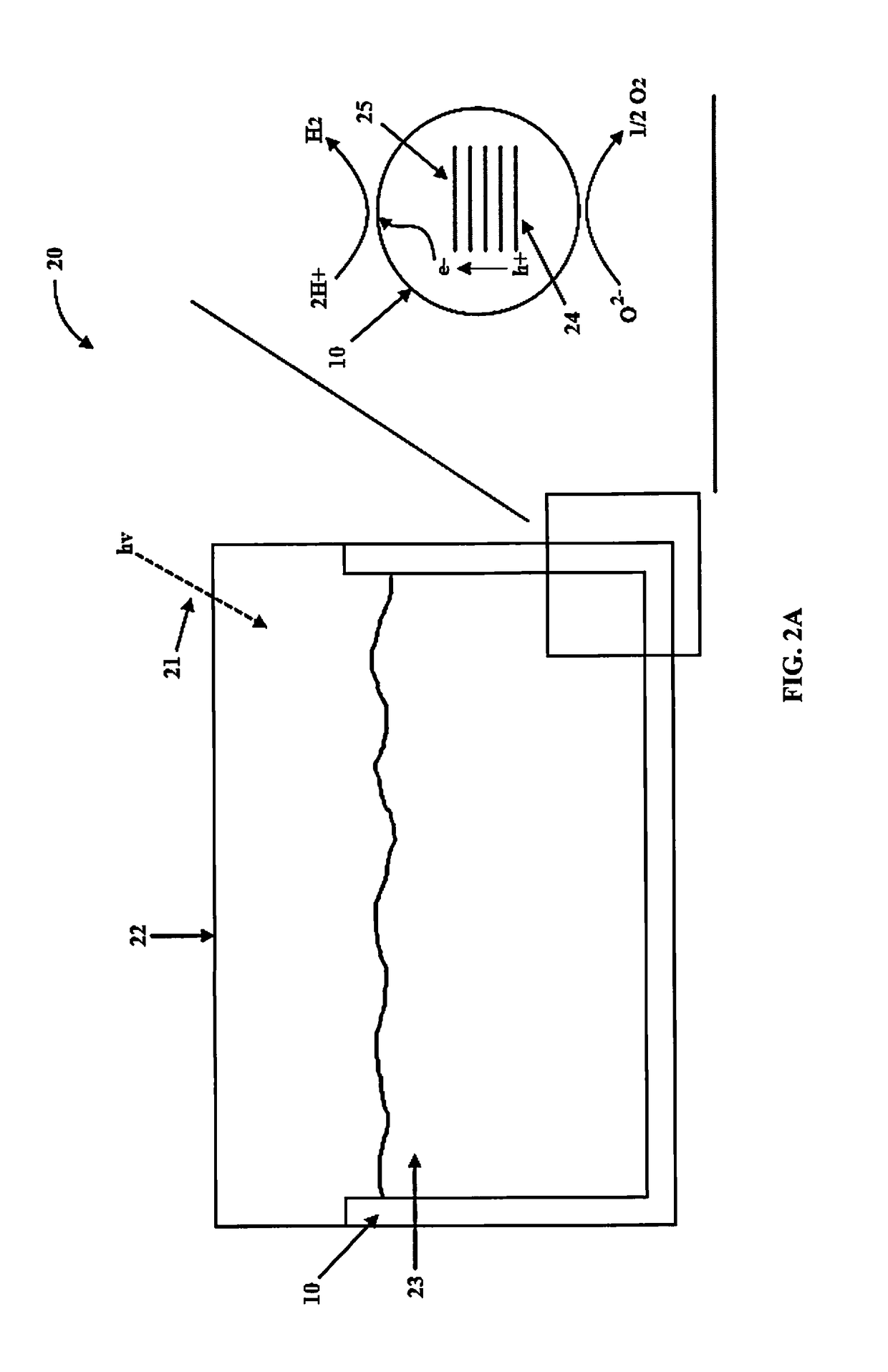Multi-layered water-splitting photocatalyst having a plasmonic metal layer with optimized plasmonic effects
- Summary
- Abstract
- Description
- Claims
- Application Information
AI Technical Summary
Benefits of technology
Problems solved by technology
Method used
Image
Examples
example 1
Production and Characterization of Photocatalysts of the Present Invention
[0062]The photocatalytic materials were fabricated on glass substrates. First glass slides were cleaned by ultra-sonication in acetone, ethanol and DI water. Thin Au films were deposited on these glass slides by thermal evaporation in a vacuum chamber. The deposition was done at room temperature with a constant deposition rate of 0.2 A° / s. To prepare the photocatalyst, anatase TiO2 (supplier: Hombikat) with an average particle size of about 7 nm and BET surface area of about 320 m2 / g was impregnated with PdCl2 salt solution. Excess water was evaporated to dryness under constant stirring with slow heating at 80° C. The dried photocatalysts was calcined at 350° C. for 5 hours. The resulting photo-catalysts with 0.4 wt % Pd loading on anatase TiO2 had an average particle size of about 10-12 nm and BET surface area of approximately 120 m2 / g. Similarly, comparative devices using non-plasmonic metal films (platinum ...
example 2
Photocatalytic Activity of the Photocatalysts of the Present Invention
[0067]Photocatalytic reactions were evaluated in a 190 mL volume quartz reactor. 30 mL of 5 vol % glycerol aqueous solution was used to evaluate the water splitting activity. The coated slides were inserted vertically into the reactor and the reactor was purged with N2 gas to remove any O2. The photoreactions were carried out using a Xenon lamp (Asahi spectra MAX-303) at a distance of 9 cm from the reactor with a total UV flux of 5-6 mW / cm2 in the 280-380 nm range. Product analysis was performed by gas chromatograph (GC) equipped with thermal conductivity detector (TCD) connected to Porapak Q packed column (2 m) at 45° C. and N2 was used as a carrier gas.
[0068]The H2 production rates of the photocatalysts of the present invention under UV and visible light excitation (280-650 nm) is presented in in FIG. 6. The photocatalytic activity was stable and reproducible. Pure anatase TiO2 with 0.4 wt. % Pd loading, showed ...
example 3
Electric Field Enhancement of the Photocatalysts of the Present Invention
[0071]To identify the mechanism of how the LSPR helps enhancing the photocatalytic activity, optical simulations of TiO2 on Au films as a function of thickness was conducted using commercial software, COMSOL Multiphysics version 4.4., in RF module. COMSOL uses finite element method (FEM) to solve Maxwell's equations for the specific electromagnetic wave condition and gives electrical field intensity (|E|2) as an output. The incident electromagnetic field was taken as 1 V / m; with wavelength of incident, electromagnetic field set to be at 500 nm and polarized in the y-direction. The incident electromagnetic field was set normal to the Au films or glass substrate. Dielectric permittivity of Au was taken from Johnson-Christy report and the Au island size for 2, 4 and 8 nm Au discontinuous films was taken from the collected SEM images while continuous films were assumed for 12, 16 and 20 nm thickness. The optical si...
PUM
| Property | Measurement | Unit |
|---|---|---|
| Fraction | aaaaa | aaaaa |
| Thickness | aaaaa | aaaaa |
| Thickness | aaaaa | aaaaa |
Abstract
Description
Claims
Application Information
 Login to View More
Login to View More - R&D
- Intellectual Property
- Life Sciences
- Materials
- Tech Scout
- Unparalleled Data Quality
- Higher Quality Content
- 60% Fewer Hallucinations
Browse by: Latest US Patents, China's latest patents, Technical Efficacy Thesaurus, Application Domain, Technology Topic, Popular Technical Reports.
© 2025 PatSnap. All rights reserved.Legal|Privacy policy|Modern Slavery Act Transparency Statement|Sitemap|About US| Contact US: help@patsnap.com



